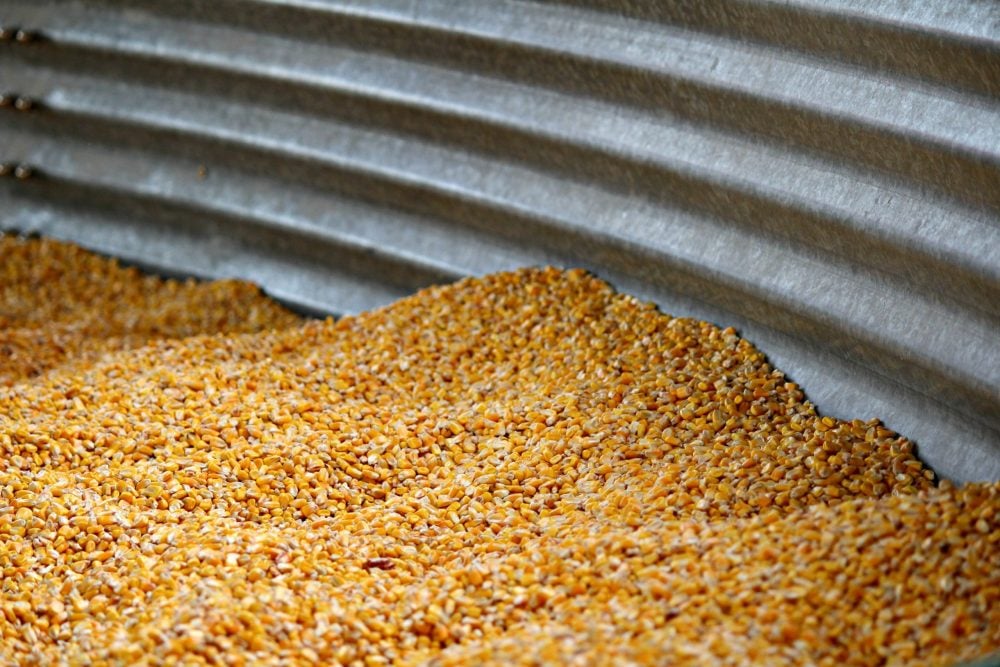Chicago/Reuters – U.S. corn futures posted their biggest weekly decline in a year on improving prospects in the Midwest during the crop’s key growth phase, raising expectations for a bumper harvest.
Soybean and wheat futures also fell on chart-based selling and spillover pressure from outside commodity markets, including metals and crude oil.
“It’s now making it into the headlines of the financial press, the degree to which commodities are declining. That is a significant headwind for the grains,” said Rich Feltes, director of research for R.J. O’Brien in Chicago.
Read Also

Feed Grain Weekly: Demand, activity slowly rising
While demand and activity is slowly ramping up for the fall cattle run, feed grain prices are currently in decline, said a Lethbridge, Alta.-based trader.
At the Chicago Board of Trade, September corn settled down 10-3/4 cents at $3.92-1/2 per bushel, dropping below its 200-day moving average. The contract had not settled below $4 since June 29.
For the week, corn fell more than 6 percent, the biggest slide for a front-month contract since July 2014.
CBOT August soybeans ended down 18-3/4 cents at $9.91-1/4 per bushel and September wheat fell 9-3/4 cents at $5.11-3/4 a bushel.
Weather conditions have been mostly favorable this week in the heart of the U.S. Corn Belt as the crop continues to pollinate, a crucial stage for determining corn yield. The United States is the world’s top corn producer and exporter.
”There is a general expectation that the crop ratings are going to be higher on Monday,” Feltes said, adding, “When the market perceives the crop is improving, prices are going to decline.”
Soybean futures followed corn lower on benign weather and technical selling, with the spot August contract dropping below its 200-day moving average.
“Rainfall observed in the U.S. reassures (the market) both in soybean and corn,” French consultancy Agritel said in a note.
Wheat sagged on dollar strength and indications that U.S. wheat remains uncompetitive on the world market.
CBOT wheat briefly pared losses after CWB Market Research Services projected a year-on-year drop in Western Canada spring and durum wheat yields following a crop tour of the drought-hit region.
However, CWB raised its estimates for Western Canadian all-wheat production due to better-than-expected prospects in eastern portions of the Prairies.













